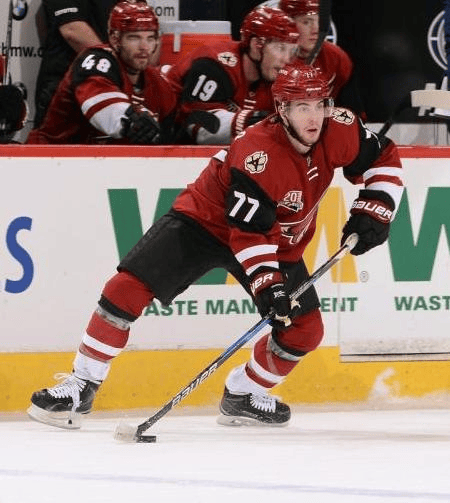Check out this Love Best Off-Ice Hockey Training. Especially if you love hockey, but despite all your conditioning training, it hasn’t improved your game. Get the best hockey training here. To be good at playing hockey today requires significant dedication and time commitment. This is challenging since players have more games and travel than ever before. Thus, there is more competing demands for training time. It is vital that players make the best use of of their limited training time by following a training program that focuses on proven, effective methods and cuts out the “Fluff”.
Best Off-Ice Hockey Training-About The Author
The author, Kevin Neeld oversees all aspects of the design and implementation of the Boston Bruins team’s performance training program. As the Head Performance Coach for the team, he monitors players’ performance, workload, and recovery. As you can see, his resume is extensive in the area of performance training. Prior to the Boston Bruins, he was the Assistant Strength and Condition Coach for the San Jose Sharks. Before that, he was the Director of a private sports performance facility in New Jersey for seven years. There he worked with pro, college, junior, and elite-level youth hockey players. Furthermore, he served as a Strength and Condition coach for 5 years with the US Women’s National Ice Hockey Team.
Traditional Training Is Ineffective
Much of the available speed training information for hockey is outdated. overly scientific, impractical, or just totally ineffective. Many players rely on spending valuable training time on quick feet drills with cones and ladders and on other speed drills that are borrowed from track and field or football training programs. In addition to this, so-called speed work is often combined with traditional bodybuilding or powerlifting routines in the weight room or no strength training at all. Unfortunately, these types of off-ice training rituals have very little bearing on skating and on-ice performance.
Speed Training Is The Key
Skating has very notable differences compared to running. Understanding the differences as well as incorporating the impact of rapid accelerations, decelerations, and direction changes required in hockey are critical in creating a training program that will transfer to enhanced ice performance. Improved speed development requires sustained intensity. If this speed intensity can’t be maintained (insufficient rest between reps, poor recovery between days, etc.), the player doesn’t get faster and may be exposed to increased injuries.
Best Off-Ice Hockey Training-Assess Where You are At
First of all, it starts with identifying a player’s strengths and weaknesses and monitoring their training progress
- Strength
- Power
- Mobility
- Skill
- Conditioning
In order to improve your speed, a player needs to identify his weak link. Which of the those above are left unchecked, Then attack that box. For you to know what you need to improve to become faster on the ice, you must know what your weak points are. Then having a system to assess each of the categories. This author goes above and beyond in explaining the precise tests he uses to make sure every variable is accounted for. Doing everything in this training program gives you an exact system to improve your Ice speed and to help you or as a coach your players no matter where they are in their journey.
Best Off-Ice Hockey Training-Speed Training
In hockey, speed wins puck races and creates time and space, As a hockey player advances in levels, so is the emphasis on increased speed. This should be one of the top priorities of your training–both on and off the ice. If you talk to any NHL star, they will say they wish they were faster. Even though speed is viewed as the hallmark of improved performance, most strength, and conditioning plans gloss over how to develop it. Rather the emphasis is getting strong. Yes, it is a contributor to speed but is not the end all.
This training program emphasizes the importance of precision in speed development. The traditional speed drills lack the intensity needed for significant improvement. Instead of mindless conditions, this program keys on the need for tailored programs that take into account the unique demands of hockey. It trains players to not only exert energy effectively but also to minimize the risk of injury.
Conclusion
This training program reflects the commitment to excellence. For the foundational principle of identifying strengths and weaknesses to age-specific speed training, the creator of this training program continues to shape the future of hockey development. Players, parents, and coaches can be confident that these innovative programs will unlock their maximum playing potential! Check it out here!



